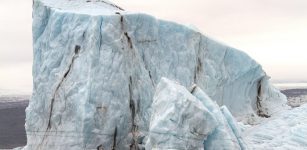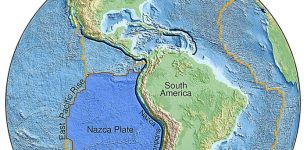Concerning Feedback Loop Contributes To Melting Of Ice Shelves In The West Antarctic Region
Eddie Gonzales Jr. – MessageToEagle.com – Researchers have made a groundbreaking discovery regarding the elusive cause behind an unprecedented phenomenon – a rare opening in the sea ice around Antarctica, spanning an area nearly twice the size of Wales, which occurred during the winters of 2016 and 2017.
Image credit: Alexrk2 – CC BY-SA 3.0
This significant finding sheds light on the intricate dynamics governing the formation and behavior of these remarkable openings, contributing to a deeper understanding of the complex Antarctic ecosystem.
A study reveals a key process called a polynya that was able to form and persist for several weeks.
The team of researchers from the University of Southampton, the University of Gothenburg and the University of California San Diego studied the Maud Rise polynya, a phenomenon named after the submerged topographic feature resembling a mountain in the Weddell Sea, where it manifests.
Their findings revealed that the polynya was caused by intricate interactions among wind patterns, oceanic currents, and the distinctive geography of the seafloor. These interactions transported heat and saline content toward the surface.
In the Antarctic region, the surface of the ocean undergoes a remarkable transformation during the winter season, wherein a vast expanse of sea ice forms, covering an area approximately twice the size of the continental United States.
In coastal regions, the formation of openings in the sea ice is an annual occurrence. These openings, known as polynyas, arise due to the influence of strong coastal winds that originate from the continent and exert a force on the ice, pushing it away and exposing the underlying seawater. However, it is a far more infrequent phenomenon for polynyas to manifest in sea ice over the open ocean, hundreds of kilometers away from the coastline, where the depths of the seas reach thousands of meters.
“The Maud Rise polynya was discovered in the 1970s when remote sensing satellites that can see sea ice over the Southern Ocean were first launched,” Aditya Narayanan, a Postdoctoral Research Fellow at the University of Southampton, who led the research, said in a press release.
It persisted through winters from 1974 to 1976 prompting oceanographers of that era to postulate its annual recurrence. However, since the 1970s, its manifestation has been sporadic and ephemeral, deviating from the initial projections.
“2017 was the first time that we’ve had such a large and long-lived polynya in the Weddell Sea since the 1970s.”
During 2016 and 2017, the large circular ocean current around the Weddell Sea became stronger. One of the consequences of this is that the deep layer of warm, salty water rises, making it easier for salt and heat to mix vertically into the surface water.
“This upwelling helps to explain how the sea ice might melt. But as sea ice melts this leads to a freshening of the surface water, which should in turn put a stop to the mixing. So, another process must be happening for the polynya to persist. There must be an additional input of salt from somewhere,” said Fabien Roquet, a Professor in Physical Oceanography at the University of Gothenburg and co-author of the research.
The researchers utilized remotely sensed sea ice maps, observations from autonomous floats and tagged marine mammals, and a computational model of the ocean’s state. Their findings revealed that as the Weddell Sea current circumnavigated Maud Rise, the turbulent eddies moved salt onto the top of the sea mount.
From here, a process called ‘Ekman transport’ – involving water moving at a 90-degree angle to the direction of the wind blowing above, influencing ocean currents – helped.
It moves the salt onto the northern flank of the of Maud Rise, where the polynya first formed. Ekman transport
“Ekman transport was the essential missing ingredient that was necessary to increase the balance of salt and sustain the mixing of salt and heat towards the surface water,” co-author Professor Alberto Naveira Garabato, also from the University of Southampton, said.
Polynyas are areas where you have a huge amount of transfer of heat and carbon between the ocean and the atmosphere. So much so that they can affect the heat and carbon budget of the region.
“For the first time, there’s a negative trend in sea ice in the Southern Ocean, which began around 2016. Earlier, it had remained somewhat stable,” according to the researchers
Written by Eddie Gonzales Jr. – MessageToEagle.com Staff Writer











